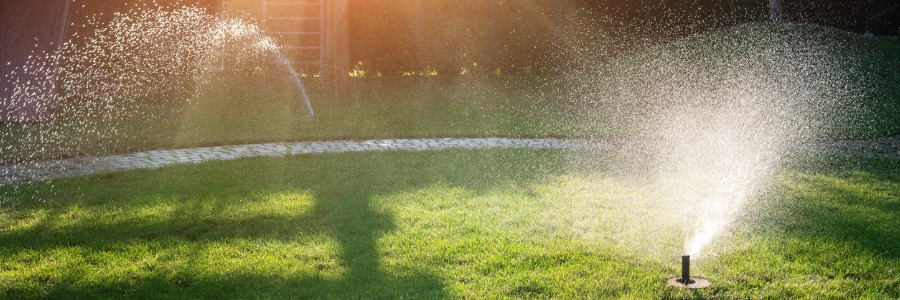
By mid-summer when the sun is blazing, landscapes that were kept lush and green following Spring plantings are beginning to thirst for more hydration. In today’s drought conditions, smart irrigation controllers are essential and can help you reduce water use up to 62%. But when you’re not onsite if something within the irrigation system suddenly malfunctions and you’re not there to resolve it, having the ability to maintain hydration of your landscape with remote irrigation could save more than you think.
Remote irrigation through a Mobile app will immediately text alerts of any issues or parts within an irrigation system that have broken or are malfunctioning. Being able to actually fix any issues remotely with a Mobile app quite literally, puts control of your Smart Irrigation system in the palm of your hand from wherever you are. The ability to maintain your landscape with remote irrigation will not only save expensive landscaping but prevent costly damage to your irrigation system.
To ensure that your irrigation system is operating efficiently during sunbaked, Midsummer days—especially in times of drought—the following sprinkler maintenance checklist will help optimize watering efficiency to keep your landscape healthy, and also reduce water waste.
- Check sprinkler heads for any debris such as sand, dirt or rocks that may obstruct the spray function of heads, and result in uneven watering of the landscape.
- Check for any broken or worn sprinkler parts that may have been damaged by lawn equipment, and replace them immediately to prevent inefficient watering.
- Check spray patterns to be sure they’re not obstructed by plants. If so, trim plants that are in the pathway of spray.
- Check nozzles to make sure they’re not clogged. Soak any that are and scrub with a toothbrush. To prevent clogging, install filters or screens. Zone flushing of the irrigation system may be needed if many nozzles are clogged.
- Inspect each valve for any leaking to make sure it is working correctly. Any soggy areas of a landscape could mean a valve is broken and not functioning properly to regulate water flow through the irrigation system.
- Check water pressure within the irrigation system and if necessary, install a pressure-reducing valve to maintain pressure at the correct level. If water pressure is too high it can damage pipes and valves and cause sprinklers to mist instead of spray.
Even after completing a Midsummer tune-up of your irrigation system, unexpected issues can arise that need immediate attention when you’re not onsite but faraway. That’s why maintaining a landscape with remote irrigation is so powerful. It begins with a real-time text alert on a Mobile app. It’s having the ability to resolve any issues remotely. It’s keeping your landscape healthy and thriving, all of it managed through a Mobile app in the palm of your hand.

